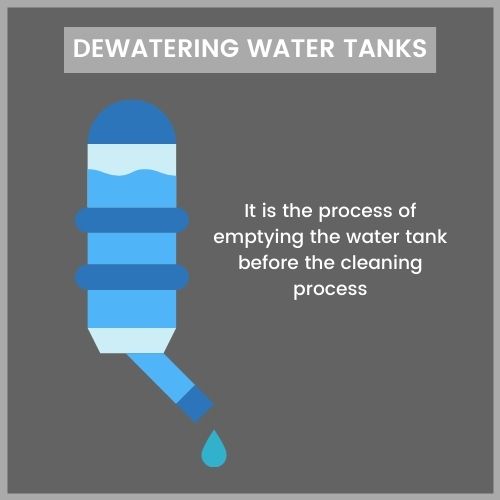
Ensuring clean and safe drinking water is vital for promoting good health. If you depend on a storage tank as your primary source of water, it’s imperative to maintain its cleanliness and prevent contaminants. But how frequently should you clean your water storage tank? In this article, we will delve into the factors that influence the frequency of tank cleaning and offer guidelines to assist you in establishing the optimal cleaning schedule for your own water tank or tanks. By adhering to regular tank cleaning practices, you can ensure the provision of potable water and the integrity of your water distribution system, especially when utilizing stored rainwater.
Factors Influencing Water Tank Cleaning Frequency
When it comes to cleaning your water tank, several factors come into play. Let’s take a closer look at these factors:
1. Usage and Water Storage
Different types of water tanks and their storage capacities can impact how often you should clean them. Residential and commercial water tanks have varying usage levels and water storage requirements. A larger tank used for commercial purposes may require more frequent cleaning than a smaller tank used in a household.
2. Water Source and Quality
The source of water and its quality also play a role in determining cleaning frequency. Tanks that store rainwater may need less frequent cleaning compared to those connected to municipal water supplies. However, it’s important to regularly monitor water quality to ensure it remains safe for consumption.
Guidelines for Determining Cleaning Frequency
To establish the appropriate cleaning frequency for your water tank, consider the following guidelines:
1. Regular Inspections and Maintenance
Regularly inspect your water tank for signs of contamination or debris. Check for algae growth, sediment, or dirt at the bottom of your tank. Conducting routine inspections helps identify potential issues and allows for timely cleaning.
2. Water Usage and Consumption Patterns
The amount of water consumed and the usage patterns in your household or business can affect cleaning frequency. A higher water usage may necessitate more frequent cleaning to maintain water quality and prevent the buildup of contaminants.
3. Environmental Factors
Environmental conditions, such as temperature, humidity, and nearby vegetation, can impact the cleanliness of your water tank. Warmer climates or areas with more vegetation may require more frequent cleaning to prevent algae growth or debris accumulation.
4. Specific Tank Types and Storage Systems
Different types of water tanks, such as cold water storage tanks or rainwater tanks, have unique cleaning requirements. Pay attention to specific considerations such as the condition of the tank lid and the use of water filters to maintain water quality.
Best Practices for Water Tank Cleaning
When it’s time to clean your water tank, follow these best practices:
1. Cleaning Methods and Techniques
Ensure a thorough cleaning process by using appropriate methods and techniques. Consider using a high-performance vacuum pump to effectively remove sludge and debris from your tank.
2. Dealing with Contaminated Water and Algae Growth
Contaminated water and algae growth can pose health risks. If your tank is contaminated, it’s important to address the issue promptly. Consider water treatment methods using sodium hypochlorite to eliminate contaminants and prevent further growth.
3. Risk Assessment and Professional Help
For complex tank systems or if you’re unsure about the cleaning process, it’s advisable to conduct a risk assessment and seek professional assistance. Professionals can ensure proper cleaning and maintenance, reducing the risk of any potential hazards.
Regular Maintenance and Prevention Strategies
To maintain a clean water tank and prevent issues, consider these maintenance and prevention strategies:
1. Regular Tank Maintenance
Regularly inspect and clean your water tank to remove sediment and organic matter. By keeping your tank clean, you minimize the risk of bacteria growth and maintain water quality.
2. Preventive Measures for Clean Water Storage
To prevent bacteria growth and debris accumulation, use water filters and regularly check your water system. These preventive measures help ensure the ongoing cleanliness of your water tank.
Conclusion
Keeping your water tank clean is essential for maintaining a healthy water supply. By considering factors such as usage, water source, and environmental conditions, you can determine the appropriate cleaning frequency. Regular inspections, proper cleaning techniques, and preventive maintenance will help you maintain clean and safe water for your household or business. Remember, a clean water tank means clean water for drinking, washing, and other daily needs.